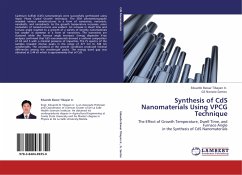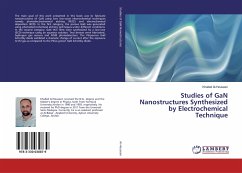Cadmium Sulfide (CdS) nanomaterials were successfully synthesized using Vapor Phase Crystal Growth technique. The SEM photomicrographs revealed various nanostructures in a form of nanowires, nanorods, nanobelts, and nanosheets. As the growth temperature increases, more nucleation of nanostructures was evident. An increase in dwell time and furnace angle resulted to a growth of a variety of lengthy nanomaterials but smaller in diameter in a form of nanowires. The nanowires are clustered while the furnace angle increases. Energy dispersive X-ray analyses confirmed that CdS nanomaterials showed a uniform composition of Cd and S with a minimal presence of impurities. The PL spectra of the samples revealed intense peaks in the range of 477 nm to 548 nm wavelengths. The variations of the growth conditions produced minimal differences among the wavelength peaks. The energy band gap was obtained at 2.44 eV which is approximately that of CdS.








